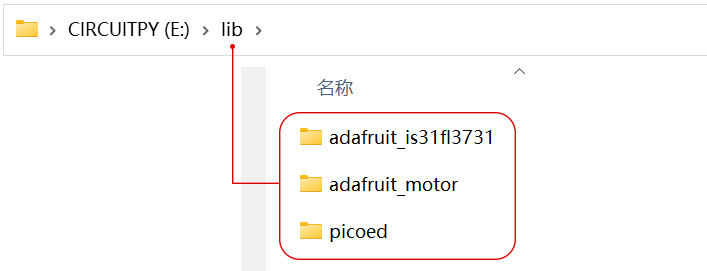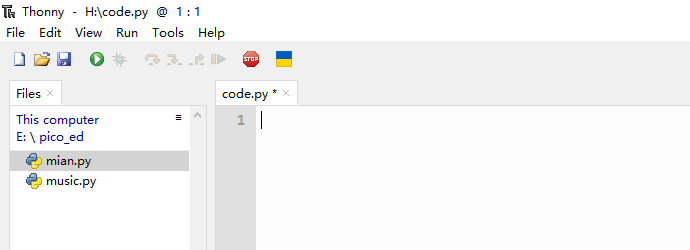programming-preparation
Programming environment construction
- We need to write programs in programming software, so we should first download and install the programming software, our recommended programming software is: Thonny. If you have already installed Thonny and selected the correct interpreter, please ignore this step, if not, you can refer to the specific installation steps at: Download and install programming software.
- Next, we need to prepare the firmware for pico:ed and burn it into Pico:ed. The firmware is the device "driver" that is stored inside the device and through which the code we write can follow the standard device driver to achieve the operation of a particular machine. Firmware is the software that does the most basic and lowest-level work of a system. In a hardware device, the firmware is the soul of the hardware device. If you are not familiar with how to burn pico:ed firmware into Pico:ed, you can refer to this article: Firmware Installation Procedure
- For the functions we want to use Pico:ed, such as the A/B button, we need to add the pico:ed library file, again, if you are not sure about the way to add the pico:ed library file, you can refer to this article: Adding the picoed library
Preparation of library files required for the case
In the next cases, other relevant libraries are needed to ensure that you can complete all the case effects.
- CircuitPython_IS31FL3731.
CircuitPython_IS31FL3731's library file contains methods to control Pico:ed's LED display. - CircuitPython_Motor.
CircuitPython_Motor's library file contains the control methods for motors and servos. - Next, just follow the steps to add the picoed library files and place
adafruit_motor,adafruit_is31fl3731in the lib folder of the CIRCUITPY disk, as shown below.

The code for the next cases is written in the code.py file on the CIRCUITPY disk, using the installed Thonny to open the code.py and write the code.

